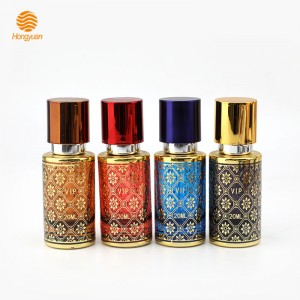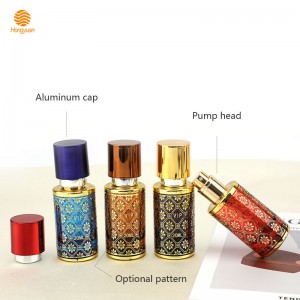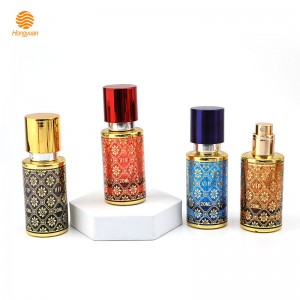A 1950s montage by American photographer Vega, who photographed a swimsuit model in a giant Chanel No.5 perfume bottle.The Egyptians were the first to use perfume. They built perfume houses next to their temples, where perfumes of myrrh and cinnamon were placed in vats to mask the smell of mummies. The origin of perfume bottles can be traced back to 1500 BC, when glass products were also symbols of power and dignity.In Greek and Roman times, perfume bottles began to be used as objects of personal pleasure. Perfume bottles that could be placed indoors appeared, many modeled after birds, humans and other animals. By 50 BC, glass blowing technology had greatly improved in Syria. Clear glass perfume bottles with stained glass decoration became the treasures of the Roman noblewomen, while metal and enamel containers appeared in the perfume market.In the 18th century, Oriental fragrances in ceramic bottles became popular, and the fragile nature of ceramic and difficult to transport made these fragrances extremely valuable. In the film “Cleopatra”, Queen Marie Antoinette was deeply fascinated by Oriental ceramics and led the aristocratic class.
In 1907, the spray bottle was born, and a balloon was connected to the outside of the bottle, and the perfume liquid was atomized and sprayed out by squeezing the balloon. A very popular spray-on perfume at the time, De Vilbis, had the fluid shape of a wine glass, with transparent glass flowers at the top and thin ears hanging from the end of the balloon. This design seems a bit outdated and cumbersome now, but it just catered to people’s reverie of “feminine” at the time.In the 1920s, World War I caused the decline of the beauty industry in Europe, and the United States became a major perfume manufacturer. The new perfume bottle design reflects the gorgeous beauty of Hollywood extravagance. In Europe, the prevalence of art deco and urban life inspired designers. Lentheric’s Miracle, A. Euziere’s Atakor, and three fragrances from Jean Patou, Le Sien, Amour-Amour and Que Sais-Je, are all representative of this period.
The most successful perfume of the 1920s was Chanel No.5. It is packaged in a simple square bottle with a simple paper label and glass mouth, and the linear design reflects Coco Chanel’s character and simple modern design concept.
With the onset of the Great Depression, perfume sales plummeted. This has led to the disappearance of many over-designed perfume bottles from the market. Some perfume brands have simplified their perfume bottles, opting to focus on paper packaging. The revival of perfume bottles had to wait until the end of World War II in the late 1940s. This time, the glass blowing process went to the grave, the variety of perfume bottle design reflects people’s pursuit of personality, metal, plastic and other materials, hand-painted, enamel and other decoration began to rise. Germaine Lecomte’s Soir de Fete, for example, combines glass, plastic, thread and metal in bottles lined with pink poplin, reflecting a decadent, consumer-ready beauty.The perfume bottle design of the 1950s was influenced by the vigorous modern art movement. Perfume manufacturers became sponsors of expressionist and surrealist artists. The artist Salvador Dali designed the perfume bottles of Elsa Schiaparelli and then Marquay. For Marquay’s “Rock ‘n Roll” perfume bottle, he used abstract black and red patterns that were very conceptual. In the Le Roy Soleil bottle designed for his friend Shabberrelli, Dali used golden sunsets and bird patterns with his own visual improvement.
Post time: Dec-28-2023


